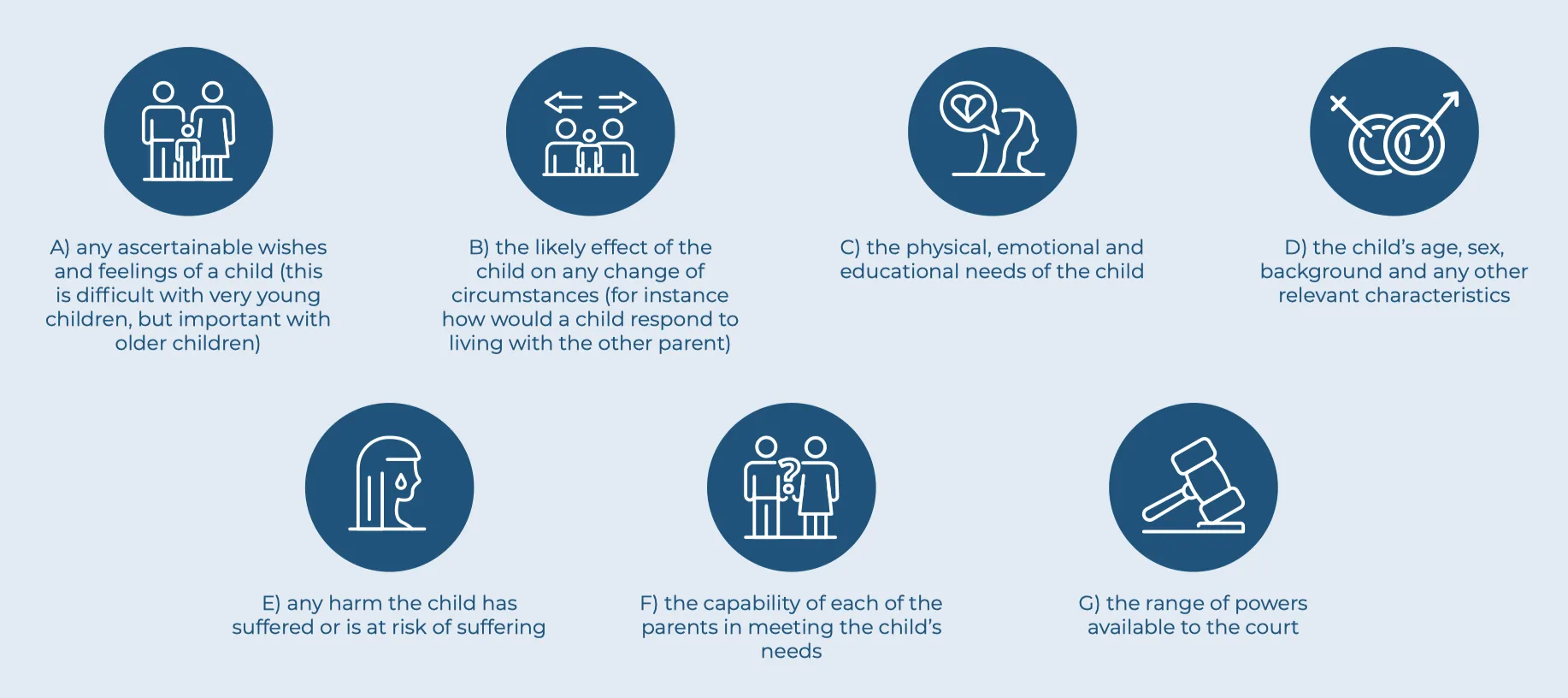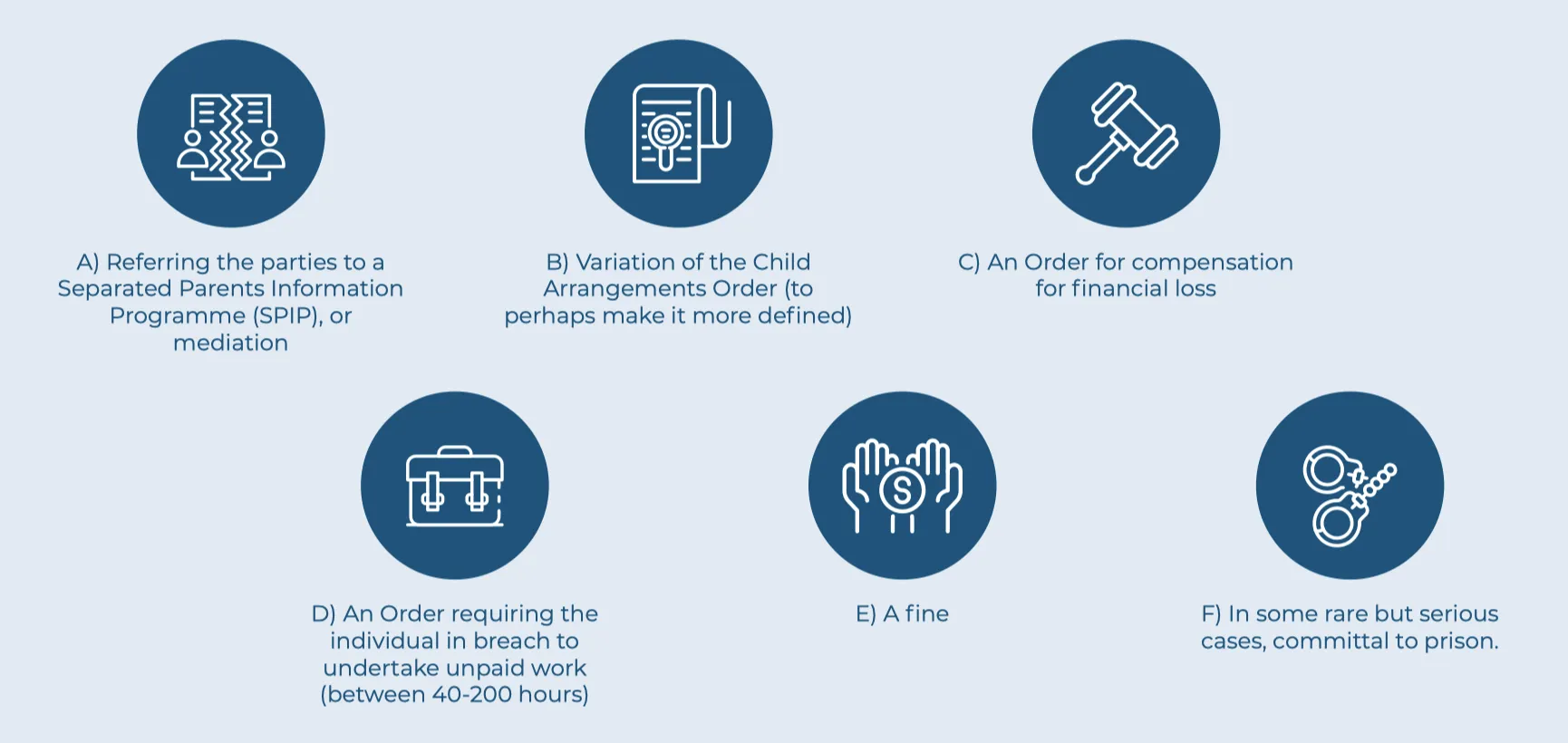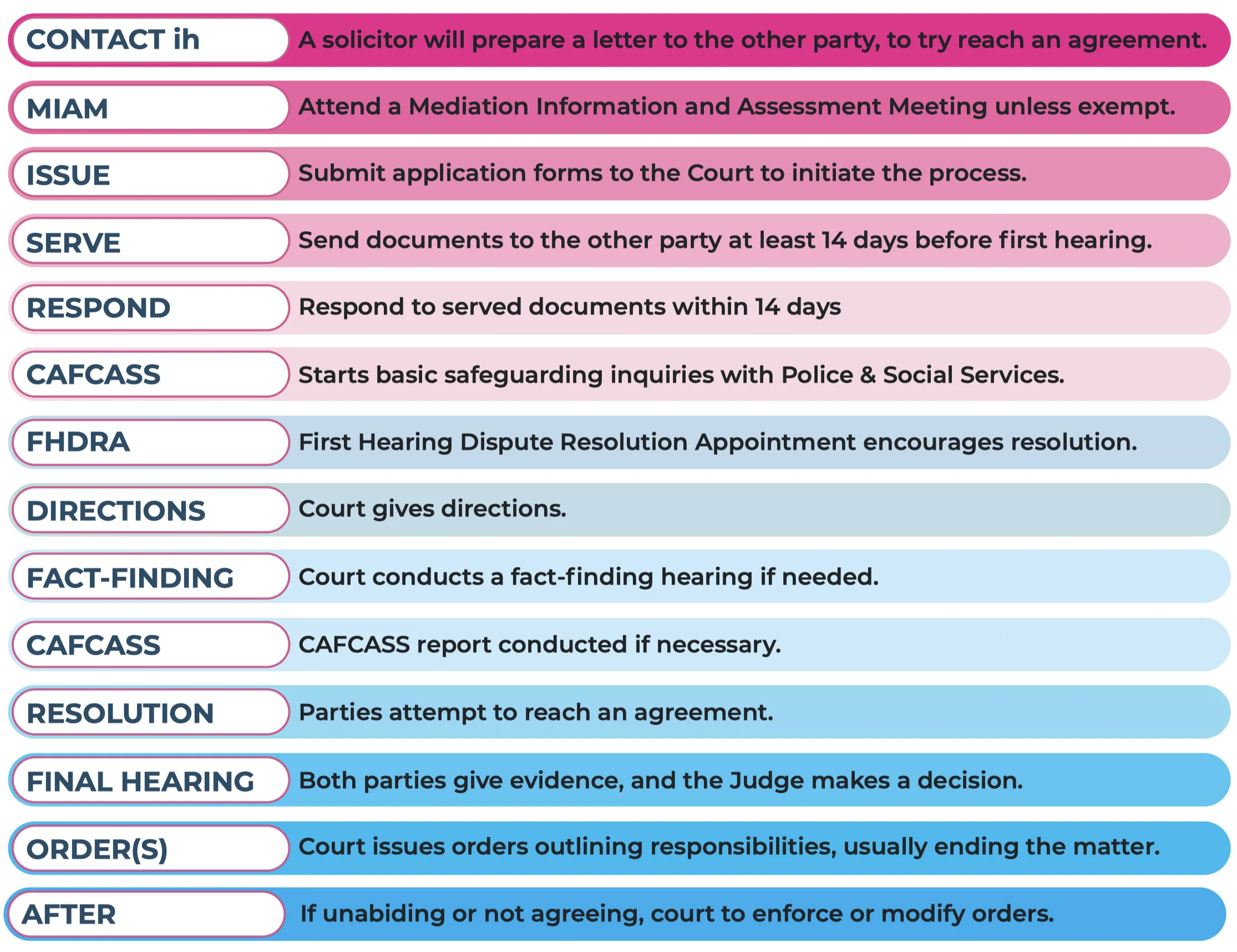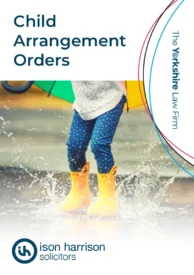What is a child arrangements order?
A ‘Child Arrangements Order’ details where a child lives, when a child spends time with each parent, and may set out information about other types of contact such as telephone, video call and letter contact.
Child Arrangement Orders replaced ‘Residence’ and ‘Contact’ Orders, and were introduced by the Children and Families Act of 2014. Therefore, since April 2014, the family court has not made Residence and Contact Orders.

Did You Know...?
There is no standard time frame for a Child Arrangement Order to be completed and it can take between 6 to 12 months to achieve a final order. This depends on the factors within your case and whether there are any safeguarding concerns.
Who can apply for a child arrangements order?
There are individuals who are ‘automatically entitled’ to apply for a Child Arrangements Order, and others who firstly need permission of the Family Court to apply.
Those who are ‘automatically entitled’ include parents of a child, step parents and civil partners, any person with whom a child has lived for 3 years, or in the case of a relative, the child has lived with them for 1 year immediately preceding the application.
In respect of those who require the family court’s permission to apply for a Child Arrangements Order, these commonly include a grandparent or grandparent(s) where the child has not been living with them for 1 year preceding the application before the court.
Top Tip!
Create a parenting plan that works for both parents. Think of a calendar year and all the events in which your children participate or are involved. From where your children will sleep each night of the week, to how you will organise parent evenings at school. From what you want to happen on the birthdays of the children to how you communicate about the children. From matters of health to arrangements for holidays and travelling abroad.
How does the family court decide on an application for a child arrangements order?
In all cases, a child’s welfare is the court’s paramount consideration. To assist the court in decision-making consistent with a child’s welfare, the court will have regard to the welfare checklist which is set out in the Children Act 1989.
What if a child is a teenager, does that make any difference?
If the child has reached the age of 16 years or over, then an application for a Child Arrangements Order should not generally be brought. This is on the basis that the Children Act 1989, does specifically prevent the court from making a Child Arrangements Order in relation to a child who is 16 years and over, unless the court is satisfied that the circumstances of the case are exceptional. This might be the case with some disabled children.
For teenagers under the age of 16 years, whilst applications may be brought and considered by the family court, any decisions are likely to be significantly informed by the child’s own wishes and feelings.

Did you know...?
A Child Arrangement Order is not legally binding. However, you can make an application to the court for a legally binding order.
Who are CAFCASS?
CAFCASS are the ‘Children and Family Court Advisory and Support Service’.
They are involved in all Child Arrangement Order cases before the family court and at a basic level are responsible for completing safeguarding, police and LA background checks against all individuals involved in an application before the family court.
At a more intense level, where the family court has identified that there are welfare concerns about one or both of the parents’ care of a child, then CAFCASS are responsible for completing a fuller welfare report.
Welfare reports can take some weeks to prepare and usually involve the CAFCASS officer meeting with parents, carers and children, as well as speaking with other professionals who might have involvement with a family.
Any welfare reports that are prepared will assess the welfare of a child with reference to the welfare checklist, and make a recommendation to the court about whether a Child Arrangements Order should be made, and what the specific arrangements for any child should be.
The court rarely departs from a CAFCASS officer’s recommendation and so CAFCASS are a very important part of the process.
What can I expect at court hearings?
Sometimes family cases will be heard by Magistrates who are assisted by a legal advisor, and other cases will be heard by a District Judge, or even a more senior Judge. It will depend on the complexity of the case as to who hears and decides on a Child Arrangements Order application.
Initial Hearing
The initial hearings are generally shorter, and include the First Hearing Dispute Resolution Appointment Hearing (Known as a FHDRA hearing), and Dispute Resolution Appointment Hearings (Known as DRA hearings).
Direction Setting
All hearings present as opportunities to agree cases with the other party or parties to an application, but where agreements cannot be reached, then these shorter hearings are used to set directions and timetable the case to later hearings.
Welfare Evidence
Common directions that are seen are ones for CAFCASS to do a welfare report, parents to do written statements, and sometimes directions for police disclosure or medical evidence to be produced.
Final Hearing
A final hearing is as it suggests, an end of case hearing, where the Magistrates or a Judge will decide on the outcome of a Child Arrangements Order application. This will usually be after hearing oral evidence from all parties and other relevant individuals. Final hearings tend to have a duration of a full day or more.
What if a parent fails to comply with an order?
All Child Arrangement Orders should contain a ‘warning notice’ and this sets out the consequences for an individual in failing to comply with (or breaching) the terms of the Child Arrangements Order.
As to those consequences, they are determined by enforcement proceedings and can include:-
Other Methods
The court and a child arrangements order seems rather involved and very formal, are there other methods that can be used to try and resolve problems in agreeing the children’s time with each parent?
SOLICITORS LETTERS
The court is a last resort remedy. Solicitors will try and resolve problems via letter to the other party, the letter may make some proposals for the children’s care, and could invite the party receiving the letter to engage in a negotiation.
MEDIATOR
This is where both parties would either meet face to face or via video call. As well as the convenience that video call offers parties, parties often feel more comfortable without having to meet the other person around a physical table. It can lead to a more comfortable, perhaps safer discussion process.
IN THE CASE OF DOMESTIC ABUSE
Mediation and indeed negotiation by solicitors letter is not likely to be suitable. Children witnessing domestic abuse is very damaging to them emotionally. These cases therefore should always have the court’s oversight and a Cafcass officer would decide on the safety of contact arrangements for any child.
Summary of the process

Speak to us today
Speak to our family law team today about a child arrangement order today. It’s never too early to start the safe guarding of your child.






